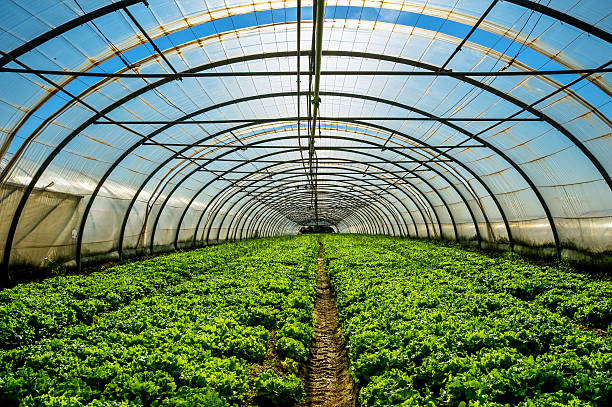Greenhouse Design: Producing an Eco-Friendly Expanding Space
Discover just how to design a greenhouse that optimizes all-natural light, conserves water, and integrates sustainable power resources. By picking lasting products and applying energy-efficient heating and cooling systems, you can produce a greenhouse that is both ecologically mindful and efficient.
Choosing Sustainable Products
When designing your eco-friendly greenhouse, prioritize sustainability by carefully selecting products that are environmentally-friendly and promote energy performance. Among the most important aspects of creating an environment-friendly greenhouse is picking lasting materials. By selecting materials that have a marginal influence on the setting, you can minimize your carbon impact and add to a much more sustainable future.
Start by considering the products utilized for the structure of your greenhouse. Search for options such as sustainably harvested timber or recycled materials. These choices not just minimize the demand for new resources yet likewise avoid waste from finishing up in garbage dumps. Additionally, consider making use of products that have a high thermal mass, such as stone or concrete, as they can aid control the temperature inside the greenhouse, lowering the requirement for excessive home heating or air conditioning.
One more important aspect to consider is the glazing material for your greenhouse. Pick materials that give exceptional insulation buildings, such as double- or triple-pane glass or polycarbonate panels. These products can aid trap warmth inside the greenhouse, reducing the amount of power needed for home heating during chillier months.
In addition, when selecting products for the inside of your greenhouse, choose lasting options such as bamboo or recovered timber for shelving and benches. These products are not only resilient yet also promote the liable use of resources.
Maximizing Natural Light
To optimize all-natural light in your environment-friendly greenhouse, focus on the calculated placement of skylights and home windows to optimize sunlight direct exposure throughout the day. When determining on the positioning of windows, think about the path of the sunlight throughout the day and exactly how it will certainly influence the different areas of your greenhouse.
They allow sunshine to go into from above, providing an added source of light for your plants. When installing skylights, consider their size and placement (Monarch Custom Greenhouse Utah).
Implementing Energy-Efficient Home Heating and Air Conditioning Solutions
To further improve the energy performance of your environmentally friendly greenhouse, take into consideration executing energy-efficient home heating and cooling systems. These systems play an important duty in maintaining optimum temperature and humidity degrees for your plants, while minimizing energy intake and click to find out more reducing your greenhouse's carbon footprint.

This enables for the exchange of fresh air and helps manage the temperature level inside the greenhouse. These systems utilize much less energy compared to typical air conditioning devices and can efficiently lower the temperature level inside the greenhouse.
Water Preservation Techniques
To even more enhance the power effectiveness of your environmentally friendly greenhouse and continue lowering its environmental influence, it is essential to implement reliable water conservation strategies. Water is a valuable source, and with the ideal techniques, you can lower your greenhouse's water usage while still supplying optimal problems for your plants.
One way to save water is by making use of a drip irrigation system. Furthermore, installing a rainwater harvesting system can assist keep and record rainwater for later usage in your greenhouse.
An additional technique is to mulch your plants. Adding a layer of organic material around the base of your plants aids keep wetness in the dirt, reducing the requirement for regular watering. Furthermore, consider utilizing a water-efficient potting mix that maintains dampness while still providing sufficient drain.
Last but not least, check your greenhouse's water use routinely. By tracking just how much water you are making use of, you can identify areas for improvement and make required modifications.
Incorporating Renewable Resource Resources

Verdict
In verdict, by executing sustainable materials, maximizing natural light, utilizing energy-efficient home heating and cooling systems, practicing water conservation methods, and including renewable resource sources, you can create an environment-friendly greenhouse style. This will not only benefit the environment but likewise promote healthy and sustainable plant growth. So, go on and make a favorable influence on the earth deliberately a green expanding room.
When making your eco-friendly greenhouse, prioritize sustainability by thoroughly choosing materials that are environmentally-friendly and promote power effectiveness. These materials can help catch warmth inside the greenhouse, minimizing the quantity of power needed for heating throughout chillier months.
These systems utilize less power compared to conventional air conditioning units and can efficiently lower the temperature description level inside the greenhouse.
You can integrate sustainable power resources into your greenhouse design to make it much more environment-friendly and sustainable.In final thought, by carrying out sustainable materials, optimizing all-natural light, making use of energy-efficient home heating and cooling down systems, exercising water preservation methods, and integrating renewable energy resources, you can develop an environmentally friendly greenhouse style.